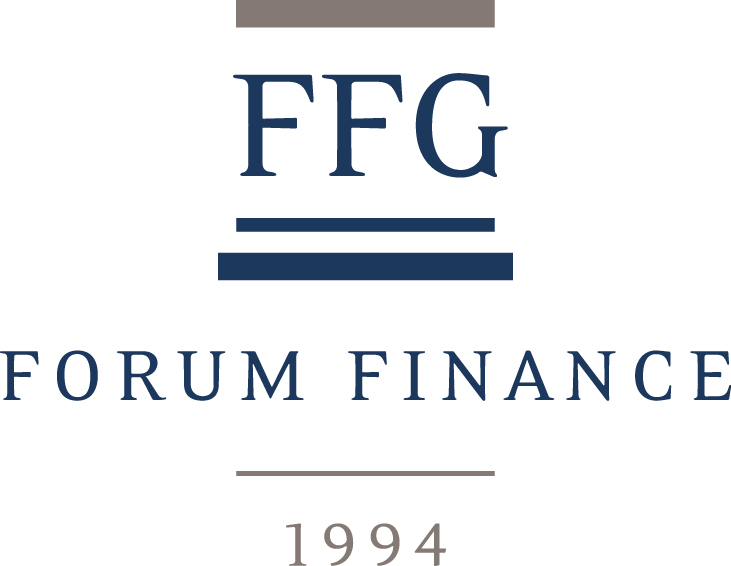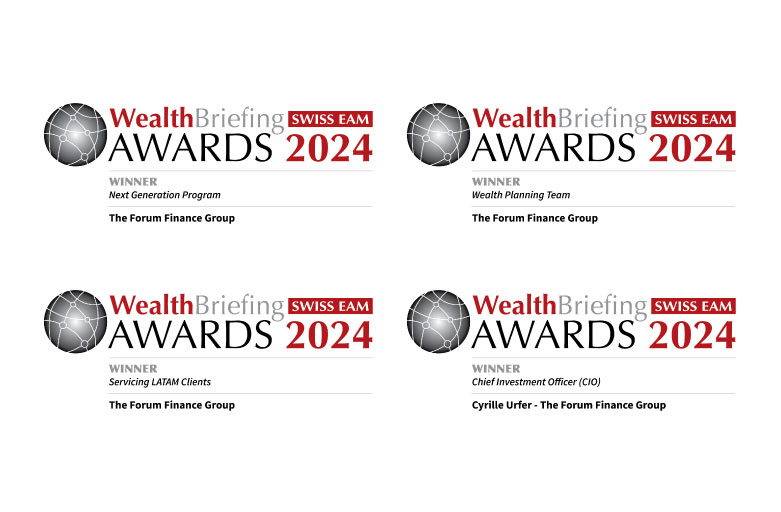Outlook | 2026
In a Nutshell
Economic Outlook
Macro risk shifts from “no growth engine” to “one over‑crowded engine”: policy, regulation, and capital‑allocation decisions around AI will shape both regional performance and the balance between real‑economy gains and financial‑market excess.
U.S. growth shifts from exceptionalism to “slow but positive,” with tariffs and policy uncertainty acting as a drag rather than an outright shock. Europe and Japan emerge as incremental contributors rather than outright laggards, while China remains a structural weak spot.
Tariffs pose upside risks to U.S. and emerging market inflation, while Europe anticipates disinflation from subdued demand; so overall sticky but not accelerating dynamics.
Artificial Intelligence (AI) attenuates the downside in long‑term productivity and potential growth assumptions, especially in advanced economies, and partly offsets tariff and demographics headwinds.
Key Risks
Inflation may rebound due to supply disruptions, strong demand, or wage pressures, complicating central bank easing paths despite disinflation forecasts.
Elevated tensions raise odds of trade wars, and commodity spikes, with US-China frictions and tariffs curbing global trade volumes. Europe faces export weakness from US policy shifts.
Sovereign debt pressures from loose policies, populism, and defence spending could trigger bond sell-offs and tighter conditions. Equity corrections loom from high valuations and earnings misses.
Investment Convictions
We maintain a pro-risk stance as we enter 2026, favouring equities primarily amid the expected Fed easing and global growth. However, we are also aware of the potential for policy volatility.
A dovish monetary cycle, which represents a tailwind for rate-sensitive assets, such as small-cap stocks with a U.S. focus and emerging markets, is undeniably supportive of various asset classes.
We remain underweight in interest rate risk (duration) and core government bonds, favouring credit selectively and considering less directional credit exposure, such as long/short strategies.
The US dollar is likely to weaken further in Q1, driven by Fed rate cuts that are expected to be even more aggressive than currently anticipated, due to the anticipated change at the Chair level, which will narrow the yield differentials with peers such as the ECB and BoE.
Finally, amid equity concentration and bond yield pressures, we remain committed to alternatives and gold to make our portfolios more resilient. Although Bitcoin and similar cryptocurrencies are now part of our investment universe, we have limited conviction in them at this stage.
Table of contents
- OUTLOOK 2026 : IN A NUTSHELL
- 2H 2025 MACRO REVIEW : KEY HIGHLIGHTS
- OUTLOOK 1H 2026
- SCORECARD 2H 2025
- INVESTMENT CONVICTIONS 1H 2026
- ALLOCATION VIEWS
Download the Outlook 2026
Outlook | 2H 2025
Executive summary
The first half of 2025 was marked by significant market volatility, driven by heightened policy uncertainty and geopolitical tensions. The fear index reached its third-highest level on record! During this period, European and emerging market (EM) equity markets significantly outperformed US equities, especially when priced in local currencies. Meanwhile, long-term bond yields increased due to concerns about fiscal deficits, particularly in the US.
Elevated uncertainty and trade barriers are expected to hinder growth significantly, while inflation is forecast to moderate slowly on a global scale. Central banks are likely to remain cautious, suggesting that rate cuts are unlikely to resume before September.
Key risks include an escalation of conflict in the Middle East, despite the current calm following the US Air Force's bombing of Iranian nuclear infrastructure. Other risks include renewed inflationary pressures due to disrupted oil supplies, for example via the closure of the Strait of Hormuz, and tariff escalations, which could trigger recessions in major economies.
Economic Outlook
Global growth will remain below pre-pandemic averages of around 2.3% to 2.9%
Growth moderation is broad-based, with notable slowdowns in the US and China
Elevated and persistent trade barriers and tariffs are a significant drag on global growth
Inflation is expected to continue moderating globally, albeit at a slower pace
Central banks are expected to maintain a cautious stance
The U.S. Federal Reserve may hold rates steady through much of 2025
Spending to support the economy will lead to rising fiscal deficits and debt levels
Key Risks
Divergent and rapidly changing monetary and fiscal policies may tighten financial conditions and destabilise markets.
Conflicts and sanctions could disrupt trade, energy supplies and investment flows.
Rising public debt and fiscal imbalances may limit policy flexibility and increase sovereign risk premiums.
Renewed inflationary pressures could derail plans for monetary easing, prolong tightening cycles and increase borrowing costs.
Further tariff increases or re-escalation could trigger recessions in major economies and worsen global growth.
Investment Convictions
Modest overweight in credit, especially in the high-yield and investment-grade sectors.
Focus on intermediate sovereign bonds as the yield curve is expected to remain upward-sloping due to fiscal deficits and risk premia ('sweet spot').
Gold remains a hedge against inflation surprises and, more importantly, geopolitical risks.
Mid-caps still present opportunities for valuation expansion and earnings growth, making them an attractive addition to large-cap allocations.
Large-cap US stocks, particularly in the technology and growth sectors, are benefiting from AI and innovation and should therefore be favoured within the equity allocation.
Currency tailwinds and relative valuation discounts against the US dollar support emerging market equities. A modest overweight position is warranted.
In Europe, fiscal stimulus in defence and infrastructure may offset some of the headwinds caused by trade disruptions.
Table of contents
- OUTLOOK 2H 2025 : EXECUTIVE SUMMARY
- 1H 2025 REVIEW : KEY HIGHLIGHTS
- OUTLOOK 2H 2025
- INVESTMENT CONVICTIONS
- ALLOCATION VIEWS
Download the Outlook 2H 2025
Outlook | 1H 2025
Executive summary
The new US administration will be more inward-looking, with an overall pro-growth agenda that includes tax cuts and deregulation. It has also significantly reduced fears of an imminent recession. However, these measures, combined with higher tariffs and more restrictive immigration policies, will add to inflationary pressures, and could force the Fed to slow or even question its rate-cutting cycle.
The combination of robust growth, loose financial conditions and healthy corporate balance sheets means that we remain optimistic about the credit segment. We favour high yield (HY) across all regions due to the attractiveness of the all-in yield. We are more cautious on investment grade (IG), not only because of extremely tight spreads, but also because of greater interest rate sensitivity.
Despite rising policy risks, the overall environment remains supportive for equities. With earnings growth expected to reach 15% in 2025, the US market should retain its structural advantage over other developed markets, but these ambitious estimates will be difficult to achieve and could lead to negative surprises, particularly for technology mega-caps.
Economic Outlook
US election resolution brings clarity to markets
Global growth remains resilient in 2025, in line with 2024 estimates
Growth divergence among developed economies widens
Global developed market policy rates normalizing
Fed rate cuts to be more measured
Inflation tilted to the upside, especially in the US under Trump 2.0
Key Risks
Fed forced to raise rates by one-off and persistent inflation shocks
Economic slowdown without fall in inflation leads to rise in term premiums
Ineffective policies lead to Japanification of Chinese economy
Japanese real interest rates on the rise
Investment Convictions
Eurozone growth headwinds give European Central Bank (ECB) room to cut rates
US yield curves could rise in 2025, adding duration if 10Y yield rises to around 5.0%
EM corporate spreads attractive, but volatility expected as trade tariffs unfold
Supportive policy should continue to underpin US Small and Mid-Caps
Interest-rate differentials remain as catalyst for flows into dollar-denominated assets
Table of contents
- OUTLOOK H1 2025 : EXECUTIVE SUMMARY
- 2024 REVIEW : KEY HIGHLIGHTS
- OUTLOOK 2025
- INVESTMENT CONVICTIONS
- ASSET CLASS VIEWS
Download the Outlook 2025
Outlook | 2H 2024
Executive summary
We favour a more balanced positioning across and within asset classes. We believe that bond yields, including those on government bonds - something new for this segment - are attractive. Credit carry is attractive relative to corporate fundamentals, while long-dated government bonds offer protection in more difficult times in addition to their real yield.
Favourable economic data and the prospect of interest rate cuts, i.e. the ingredients of the soft-landing narrative, together with solid quarterly earnings, justify a constructive stance on equity markets. However, we would like to see a broader participation in the market rally to reduce the fragility of the bull cycle that started in early 2023.
While maintaining an allocation to the technology sector and the famous seven giants, we are balancing our portfolios with exposure to small/mid-caps and the value style, where valuations appear to offer significant catch-up potential.
Economic Outlook
Real GDP forecasts lowered for the US and Japan. China and euro area upgraded
Monetary easing becomes more widespread
Fed and Bank of England will remain on hold until September and August, respectively
FOMC dot plot implies only one 25 bps cut by year-end and four in 2025
Fannie Mae predicts that US mortgage rates will average 7% in 2024
Key Risks
Sharper slowdown in the US as labour market deteriorates sharply
US/China and EU/China trade war intensifies
Sovereign debt crisis forces governments to cut spending
Populist drift at the ballot box, testing the foundations of our democracies
Investment Convictions
Fixed income generally does well when the Fed pauses
Long-dated government bonds as a hedge against renewed recession fears
Inflation dynamics favour European over US rates (10-Year +)
EM corporate bonds offer wider spreads and diversification benefits
Prefer EU Fantastic Five to US Magnificent Seven
Small/Mid-Caps offer compelling valuation and economic sensitivity
Add value stocks for their relative valuation and diversification
Table of contents
- OUTLOOK 2024
- A BRIEF REVIEW : THE FIRST HALF OF 2024
- MID-YEAR OUTLOOK
- INVESTMENT CONVICTIONS : THE SECOND HALF OF 2024
- ASSET CLASS VIEWS - 2H 2024 : SHIFTING TO NEUTRAL
Download the Outlook 2H 2024
Forum Finance wins four awards at the WealthBriefing Swiss EAM Awards 2024
Forum Finance wins four awards at the WealthBriefing Swiss EAM Awards 2024
Geneva, 7 March 2024 – Geneva-based independent asset manager The Forum Finance Group SA has won four major awards at the WealthBriefing Swiss EAM Awards 2024. In particular, it was declared winner by the jury in the Next Generation Program, Wealth Planning Team, Servicing LatAm Clients categories and Cyrille Urfer was ranked best Chief Investment Officer (CIO).
Announced during the prize-giving ceremony held last night in Zurich, the awards showcase the ‘best-of-breed’ players in the Swiss independent asset management industry. They recognise outstanding companies, selected through a rigorous process and deemed by a panel of experts to have ‘demonstrated innovation and excellence during the last year’. The independent jury comprises specialist consultants, representatives of custodian banks and technology solution providers, as well as other industry experts. These prestigious accolades are particularly important in the current challenging times as they provide clients reassurance in the solidity and sustainability of their asset manager’s business and operating model.
With regard to the Next Generation Program, the panel was ‘impressed with Forum Finance’s internal NextGen program, as well as with their commitment to educating clients around preparing for the Next Generation. In particular, Forum Finance hosted events in Geneva for their clients’ children to introduce them to the world of finance and showing the importance of taking responsibility’.
Concerning the Wealth Planning Team, judges felt that ‘hiring a dedicated wealth planner at partner level, who is focused on NextGen topics, but also in succession planning for their entrepreneurs/clients gives the firm a deep understanding of delivering on client’s needs’.
In relation to Servicing LatAm Clients, the jury found ‘very impressive that Forum Finance has had for over 10 years a dedicated very senior team taking care of the Latin American clientele, with a wealth management offering encompassing wealth planning, portfolio management, asset management and family office services’.
Finally, the expert panel voted Cyrille Urfer best Chief Investment Officer (CIO) on the grounds of his impressive career working for big commercial banks and sovereign investment authorities, as well as leading private banks and asset managers. A veteran Swiss banker, with over 25 years of experience in EU and Middle East, Cyrille Urfer is an internationally recognised expert for his expertise in investment strategy, assessment and selection of managers/strategies, and portfolio management.
Hippolyte de Weck, Managing Partner and CEO of Forum Finance, stated: “We are truly honoured to have our strengths and achievements recognized by these four industry awards. Over the past 30 years, our company has grown significantly to become today one of the leading players in the Swiss market. We are particularly proud of the prize for Best CIO, as providing sound investment advice and achieving superior performance remains at the heart of our business.”
Indeed, having anticipated the evolution of the wealth management industry, Forum Finance has strengthened its structure and organisation over the last few years, as evidenced by the CISA licence granted by FINMA in 2015 and its registration as investment adviser with the US SEC in 2016. Forum Finance invests constantly in its research, investment management and wealth advisory resources, as well as in technology, enabling it to respond effectively to the changing needs of its clients.
For additional information, please contact :
Egon Vorfeld
The Forum Finance Group SA
T: +41 (0)22 552 83 00
E: vorfeld@ffgg.com
ffgg.com
Ricardo Payro
Payro Communication Sàrl
T: +41 (0)22 322 13 17
E: :rp@payro.ch
payro.ch
About Forum Finance
Founded in 1994 in Geneva, Forum Finance offers private banking and asset management services to a high-end global clientele. It has 25 employees who manage and supervise around CHF 2 billion. The company is authorised under the CISA licence by FINMA and is registered with the SEC as investment adviser.

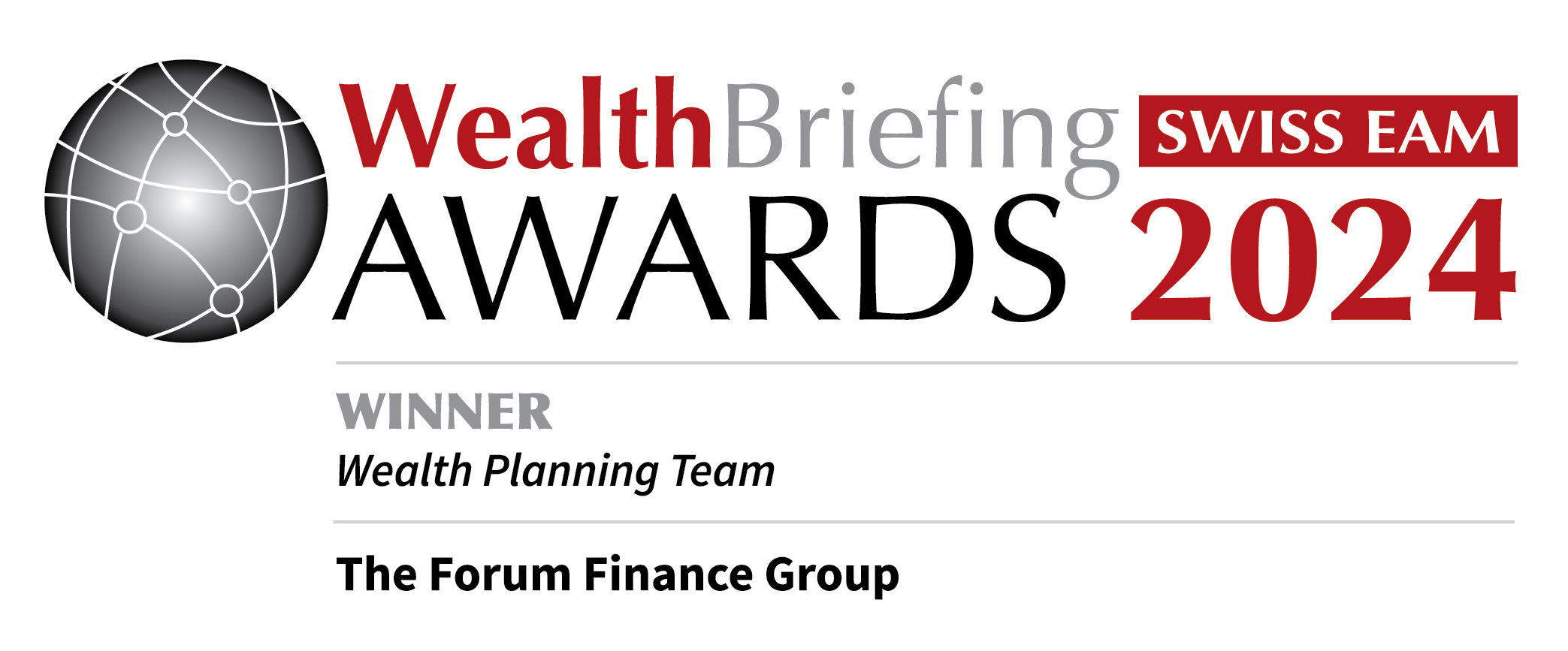
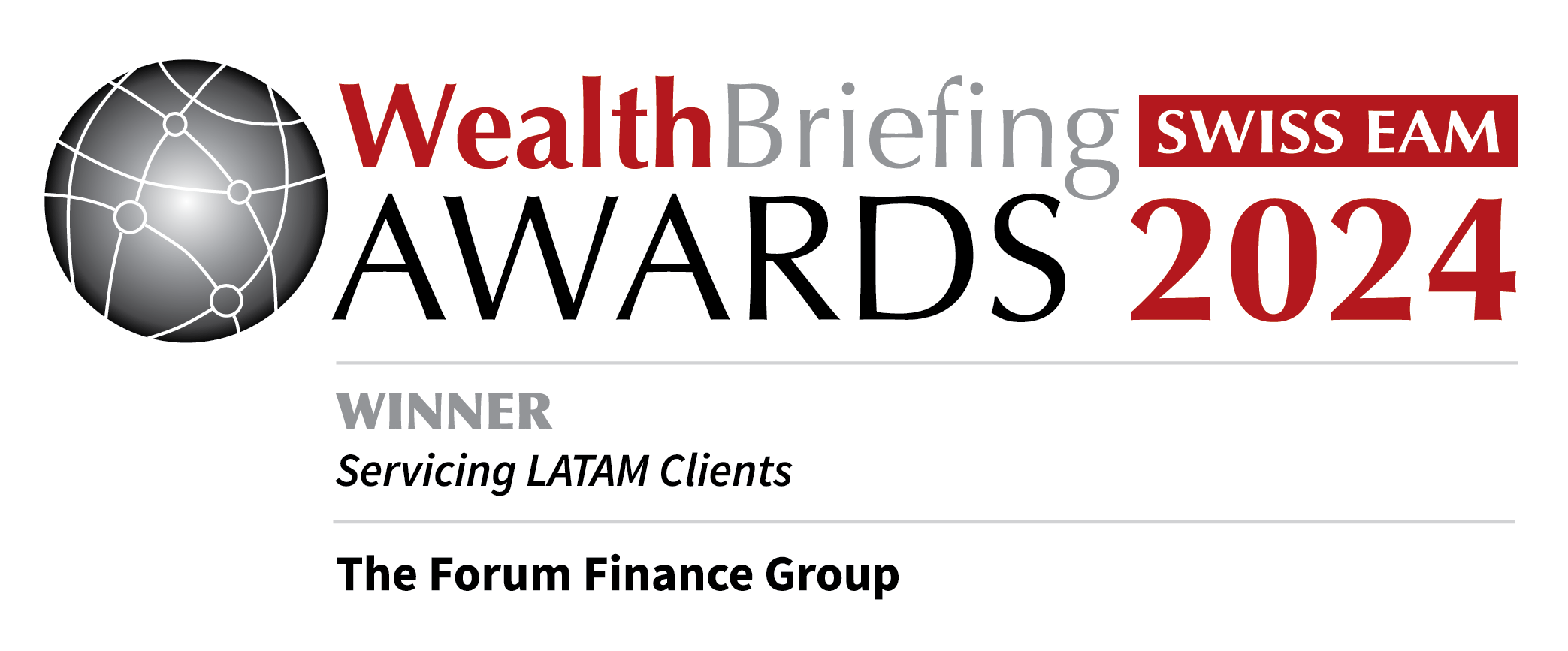
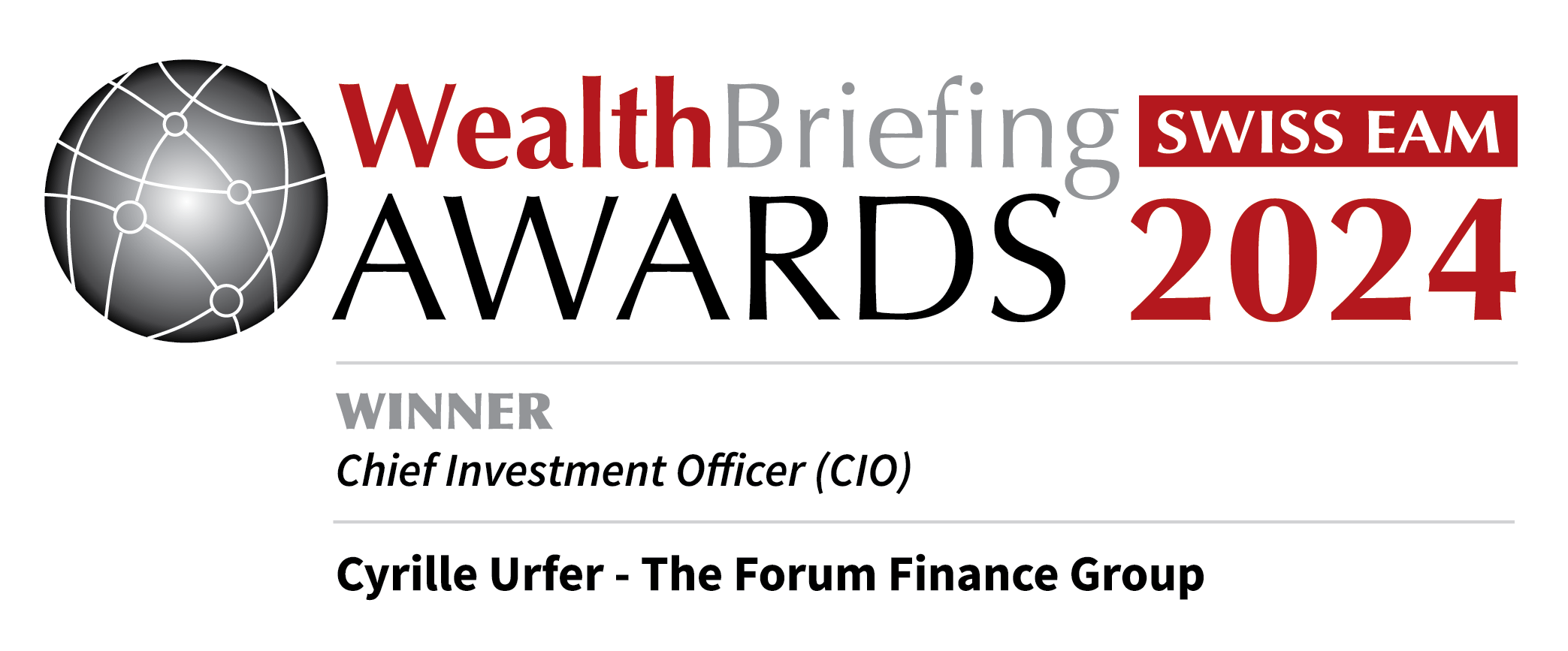
Outlook 2024
Executive summary
The year 2024 will be marked by the continued normalization of monetary policy around the world, heightened geopolitical tensions and uncertainty about the decline in inflation.
Rising interest rates and bond yields have fundamentally changed the basis for all investment decisions. This paradigm shift will favour bond investors, who will benefit from higher expected returns, but will further weaken highly indebted actors, especially governments.
Although interest rates have peaked, structural inflationary pressures, such as rising protectionism or the energy transition, will certainly increase the risk of higher inflation than we have seen in recent decades.
As we enter 2024, undoubtedly a year of transformative change, investors' agility will be an asset in seizing the opportunities that volatile markets will offer in the quest not only for wealth preservation but also for real growth.
Economic Outlook
Slower growth ahead but still slightly above potential
US growth to outperform developed peers
China growth upgraded to 4.6% in 2024
Headline inflation falls in all G10 economies except Japan
Core inflation has also fallen, but at a slower pace
Developed central banks have reached the end of their hiking cycle
Monetary policy normalization underway in Japan
Best Investment Opportunities
High nominal and real yields provide a means of locking in cash flows
Front end of curve attractive due to flat yield curve beyond 3 years
Interest rate cuts make cash less appealing
Emerging market corporate debt offers attractive carry
Yields of around 8% for high yield are rare and followed by double-digit returns
European equities set to outperform US equities
Small caps or equal-weighted index trading at significant discount to large caps
Favourable risk/reward profile for Chinese equities
Key Risks
Rising inflation could delay central bank rate cuts
US consumer spending slows sharply
China’s economic woes persist
Unchecked geopolitical tensions and conflicts
Table of contents
- OUTLOOK 2024: EXECUTIVE SUMMARY
- A BRIEF REVIEW OF 2023
- RESILIENT GLOBAL ECONOMY IN 2023 WITH DIVERGENCES
- OUTLOOK FOR 2024
- INVESTMENT CONVICTIONS FOR 2024
- ASSET CLASS VIEWS
Download the Outlook 2024
Investment Perspectives 2023 | Mid Year review & Outlook
Executive Summary
Risky assets thrived
After a tough 2022 for equity and fixed income assets, triggered by the rapid pace and magnitude of the hiking cycle initiated by the Fed and ECB, the first half of 2023 offered a relief with strong return of financial assets despite uninspiring level of economic activity in Germany and China. The Government and Investment Grade bonds had a reasonable start to the year while commodities suffered from economic growth concerns. Equity indices posted strong results, but return differences across sectors and stocks were particularly notable. The dispersion within equity markets became particularly accentuated during the second quarter after the markets had given back most of their initial strong performance at the start of the year due to the collapse of a few banks in February and March, reiterating the nasty bite fast rising rates can have on corporate balance sheets.
Narrow equity market participation
Concentrated portfolios exposed primarily to large technology stocks were rewarded. Only a handful of tech shares have been responsible for most of this year’s gains despite higher rates. Indeed, the seven-largest companies in the S&P 500, all tech companies, are up 86% on average year to date!! Meanwhile, the other 493 companies, in aggregate, have barely moved this year. In Europe, technology companies ASML and SAP have been joined by LVMH and L’Oréal as key contributors to the market surge explaining more than 40% of the index return.
U.S. growth resilient, Germany in recession
Early June, the World Bank revised its forecast for US growth for 2023 to 1.1% from 0.5% in January while China’s growth is expected to climb to 5.6%, compared to a 4.3% in January. The modest rebound in activity in China will primarily benefit domestic sectors, in particular services. Euro area GDP growth is now expected at 1.1% and 1.6% in 2023 and 2024 respectively. The key positive change underpinning this revision is the fall in energy prices and abating supply-chain disruptions.
Hawkish tone reiterated by the FED and ECB
The persistence of core inflation has emerged as a key risk as it could lead to more monetary tightening. However, lower energy prices have reduced headline inflation, with positive effects on demand and financial markets. The FED decided to hold rates unchanged in June, but most members agreed that at least one additional 25 basis points (bps) hike will be required by year end. In June, the ECB raised its deposit facility rate by 25 basis points (bps) to 3.5% and made it clear that further rate hikes should be expected at the next meeting in July, while in Japan the Bank of Japan remained dovish and will continue to support the fragile economic recovery despite stronger-than-expected inflation.
Commodities weak again
Commodity index recorded negative returns in Q1 and Q2, making it the worst asset class in our investment universe with -5.0% and -2.5% respectively as energy prices fell as global growth slowed, energy conservation and mild weather helped reducing energy demand, while rapid expansion of LNG capacities mitigated pressures in natural gas market. Prices of base metals eased due to weaker global demand in particular the slower-than-expected demand rebound in China. Additionally, increased metal supply has put additional pressure on prices. In precious metals, gold delivered a positive return (+5.23% in 1H).
Too few equities in risk-on
Our defensive allocation throughout 1H favoured alternative investments such as hedge funds for their ability to seize opportunities in periods of high volatility and to limit drawdowns and gold, which performs reasonably well in periods of stress and inflation. We maintain our relatively defensive allocation with a preference for alternatives at the expense of equities. Our allocation remains well diversified, which should benefit from some inevitable mean-reversion or provide some protection if markets take a turn for the worse.
Table of contents
- EXECUTIVE SUMMARY
- 2023 – HALF-YEAR: REVIEW OF OUR INVESTMENT THEMES
- 2023: ECONOMIC AND POLITICAL DEVELOPMENTS
- FIRST HALF 2023: FINANCIAL MARKETS
- SECOND-HALF 2023: ECONOMIC OUTLOOK
- ASSET CLASS VIEWS – 2023 - JUNE 2023
- SECOND-HALF 2023: INVESTMENT IMPLICATIONS – JULY ASSET ALLOCATION
- ASSET ALLOCATION GRID
Download the Investment Perspectives
Investment Perspectives 2023
Executive Summary
2022 was one of the most challenging years ever for investors
The past year was a brutal one for investors. The tightening of monetary policies was not a surprise, but it proved to be far more pronounced and damaging than anticipated for many asset classes. This fast-paced tightening of monetary policies, due to ongoing inflation pressures, and the war in Ukraine were the main drivers for the significant weakness of markets. China’s zero-COVID policy provided another headwind as its economy fared much worse than forecast. In a risk-off environment, there was hardly anywhere to hide, and this was reflected by the dreadful performance of US Treasuries, considered to be amongst the safest of assets. Volatility in the bond markets reached crisis levels and remained very elevated for most of the year. This stress spilled over to the other asset classes, and the high level of correlation between equities and bonds meant that diversification failed to protect well against portfolio losses.
The breath-taking speed of the Federal Reserve’s monetary policy tightening
2022 will be remembered as the year when the era of extremely accommodative monetary policies finally came to an end. Since the great financial crisis, the major central banks had lowered interest rates to zero, or even into negative territory. Investors had been expecting interest rates to rise and central banks’ balance sheets to contract in 2022, but they were not prepared for what took place effectively. The Federal Reserve’s shift from a very accommodative monetary policy to a very restrictive one took place in a matter of months only, as the size of rate increases quickly rose from 0.25% in March to 0.75% at four consecutive FOMC meetings between June and November. The US central bank hiked its rates by a total of 4.25% in 2022 to a range of 4.25% to 4.50%, with other major central banks taking a similar path, even if not at the same pace. The latest interest rate decisions and communications from the main central banks have confirmed their hawkish stance and determination to bring down inflation.
Investors will remain focused on inflation trends and geopolitics
GDP growth is expected to slow in 2023, with a high risk that the global economy could slide into recession as growth expectations for the United States and Europe are very low or negative. Much will depend on the pace of deceleration of inflation and the trajectory of interest rate increases. The task of central banks around the world is extremely challenging and the risks of a damaging policy mistake are much higher than average. Economic prospects could be boosted if China finally manages to reopen its economy successfully. Geopolitical threats remain elevated. There are many sources of tensions across the world, but one cannot exclude the possibility of some unexpected positive developments even if we are not holding our breath.
Amid elevated uncertainty we maintain a cautious asset allocation
The tightening of monetary policies has erased some of the markets’ distortions and excesses of the previous years, meaning that fundamentals should matter more now that the era of easy money has come to an end. Valuations have improved for most asset classes, but uncertainty remains prevalent on many issues. Despite last year’s derating, equities still face headwinds. That largely explains why we have maintained our overweight allocation to alternative strategies and have increased our fixed income exposure recently in view of its improved risk/return profile.
Table of contents
- EXECUTIVE SUMMARY
- 2022: REVIEW OF OUR INVESTMENT THEMES
- 2022: ECONOMIC & POLITICAL DEVELOPMENTS
- 2022: THE FINANCIAL MARKETS
- 2023: ECONOMIC OUTLOOK
- 2023: FINANCIAL MARKETS' OUTLOOK
- 2023: ASSET ALLOCATION
